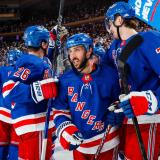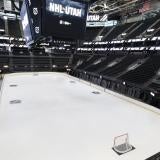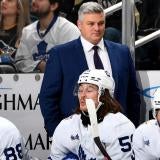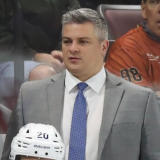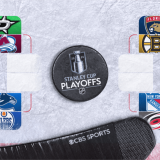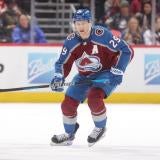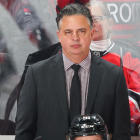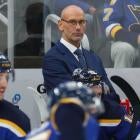
In the salary cap era, where NHL teams have to be efficient with their money, it's important for each club to have a core group of players who set the foundation on which to build the rest of the team. This group often includes the players who consume the bulk of a team's cap space, while also providing the greatest on-ice impact.
With that in mind, Eye on Hockey introduces our summer series: "Core Values." We'll take the rest of summer to evaluate the group of five to seven players who make up the core of each team. Using criteria like point production, average age, how the players were acquired, total cost and cap hit, we'll detail which teams have the strongest cores and which need work. On top of that, we'll also gaze into the future to look at the players who could one day be part of this crucial group for each team.
The Ottawa Senators took two steps back in 2013-14 after a solid run in 2013. The Sens have lost their captain in back-to-back years, with Daniel Alfredsson bolting in free agency ahead of last season and Jason Spezza asking out of Ottawa and getting his wish this summer. With the roster losing significant scoring over the past two years, it's hard to see improvement in 2014-15.
Even with the losses, the Senators have some good pieces in the lineup led by former Norris Trophy winner Erik Karlsson. There's also a promising top line of Bobby Ryan, Kyle Turris and Clarke MacArthur. That leaves something for the club to build around over the next few years.
Ottawa also has it's goaltending solidified for at least the next three years. Craig Anderson, the seasoned veteran, just signed a three-year extension with the club, while up-and-comer Robin Lehner signed one as well. There could be some hearty competition over the next few years, though Lehner appears to be the starter of the future.
There's a bit more cause for concern in the lack of high-end prospects in the system to replenish the NHL roster in the coming years. Part of that is due to the fact that a host of young players have already made the jump to the NHL, while others were part of trades. Top prospect Curtis Lazar could be in line to make the team next season, but after him, the system starts dropping off in quality. That puts a lot of pressure on the players still young in their NHL careers to progress more rapidly.
The outlook for the organization as a result isn't overwhelmingly positive unless the young guys already at the NHL level can bring more to the table starting next season. The club has a looming negotiation with Ryan and defenseman Marc Methot as well, which could dictate a lot of the Senators' future plans.
Core Values: Ottawa Senators
Players (Age, term remaining on contract): D Erik Karlsson (24, 5 years), RW Bobby Ryan (27, 1 year), C Kyle Turris (25, 4 years), LW Clarke MacArthur (29, 6 years), G Craig Anderson (33, 4 years), D Marc Methot (29, 1 year), LW Milan Michalek (29, 3 years)
Total cap hit for 2014-15: $28,537,500 (41.3 percent of salary cap consumed by seven players)
Average age: 28
Total point production in 2013-14: 116 goals, 181 assists, 297 points (48.6 percent of team's total point production)
About the Core
Erik Karlsson: Not every team in the NHL can claim to have one of the league's rare talents, but the Senators can with Karlsson. There aren't many teams that can expect near point-per-game averages from a defenseman, which is what Karlsson has provided over his most recent healthy 82-game seasons. The talented offensive defenseman has 237 points in 315 NHL games. He led the team last season with 74 points, just four shy of his career best in his Norris Trophy season in 2011-12. Karlsson also hit 20 goals for the first time in his career. His actual defense isn't exactly the best, but his skill level and the Sens' ability to use him for 27-plus minutes a night gives them a better chance to control the puck. As the NHL moves more toward a transition, rush league, Karlsson's value is immense. Having the vision and speed to get the puck up ice in a hurry and keep the other team on the defensive is huge. As a result, Karlsson's possession numbers are significantly positive. He makes them a better team, period, and will for a long time. How he was acquired: 2008 NHL Entry Draft, first round, 15th overall

Bobby Ryan: Though his first campaign in Ottawa was somewhat disappointing with his least productive season as a full-time NHLer, Ryan remains an important offensive weapon. Ryan had 23 goals and 48 points in 70 games. Before the lockout season, he had four straight seasons of 30-plus goals. Can he be that type of player again? At just 27 years old, of course. Ryan's shot rates last season were slightly below his career norms, as was his shooting percentage. There's reason to believe Ryan will bounce back. But the fact that there is only one year remaining on his contract is going to loom overhead. Ryan has the allure of being a high-end goal scorer with unrestricted free agency in his grasp. The Sens will likely have to pay big to keep Ryan from hitting the UFA market. If they don't manage to get him extended before the season, the price probably only goes up. After losing high-end offensive contributors like Alfredsson and Spezza, the Sens can ill afford to lose Ryan next. How he was acquired: Traded from the Anaheim Ducks for Jakob Silfverberg, Stefan Noesen and a first-round pick on July 5, 2013
Kyle Turris: The 2013-14 season represented a breakout year for Turris. The former No. 3 overall pick has had an up-and-down start to his career, but seems to be finding his legs in Ottawa. Having played a healthy, full 82-game season for the first time in his career, Turris delivered with 58 points, including a career-best 26 goals and 32 assists. He will be the team's top-line center and looks like he'll be able to build off of his strong performance. Since arriving in Ottawa in 2011-12, Turris has really opened things up offensively and they've needed him to. In 179 career games with the club, he has 116 points, almost doubling his points-per-game output from his four-year stint with the Coyotes. The best part is that Turris comes essentially on the cheap for his next four seasons at a cap hit of just $3.5 million. Now 25, he should have the confidence to assert himself as a top-line center. How he was acquired: Traded from the Phoenix Coyotes for David Rundblad and a second-round draft pick on Dec. 17, 2011
Clarke MacArthur: After signing a new five-year extension this offseason, MacArthur won't have to doubt how much he is valued in Ottawa. When the Toronto Maple Leafs let MacArthur walk in free agency after 2012-13, it seemed like he was going to make the club regret that. It didn't take him long. MacArthur was an impact player for the Senators in 2013-14. He scored a career-best 24 goals and had 55 points, the second highest single-season total of his career. The 29-year-old has bounced around over the years, but he'll have stability in Ottawa and a prominent role on the roster. In addition to showing some solid production, MacArthur has been a solid possession player despite playing on typically poor possession teams. That continued with the Senators last season. There's some risk in MacArthur's new deal given his age, but he's surging in his career and given his style of play, should be able to sustain it for at least a few more seasons. How he was acquired: Signed as an unrestricted free agent on July 5, 2013
Craig Anderson: It seemed the Senators were destined to let Anderson quietly slip away after extending Robin Lehner's contract, but Anderson just signed a three-year extension of his own. That suggests he is very much still the Senators' Plan A in net for the near term. After bouncing around for years, Anderson has found what could be the last stop of his NHL career with Ottawa. He has made 158 appearances for the club since 2010-11 and has rewarded the Senators with a .920 save percentage, 2.62 goals-against average and 12 shutouts to go along with an 81-52-17 record. Anderson is coming off his worst campaign as a member of the Sens, however. In 53 appearances, he had a .911 save percentage and 3.00 goals-against average. He needed to be better with the team he had in front of him and just wasn't. That makes the timing of his extension rather curious. Why not see if he could bounce back in a contract year before making a multiyear commitment? Anderson may eventually be pushed out of this slot by Lehner, but he has four years left with the team for which he has played some of his best hockey. If healthy and sharp, Anderson can be a high-level goalie. With the offensive losses, he's going to need to be this season. How he was acquired: Traded from the Colorado Avalanche for Brian Elliott on Feb. 18, 2011.
Marc Methot: After watching Anderson and MacArthur earn extensions, Methot might be wondering when his will come, if at all. Ottawa's No. 2 defenseman has played some strong seasons since joining the team via trade two years ago. Recent talks for an extension were reported to have stalled, so it will be interesting to see how this plays out. Methot played nearly 22 minutes per game last season. He had his best offensive year with career highs in goals (6), assists (17) and points (23). As a more defensive-minded defenseman, Methot keeps things stabilized on the back end without being a possession liability. He also blocked a career-high 110 shots and has an effective physical game as well. The Sens don't have much depth on the blue line as its younger players still need time to mature, so re-signing Methot should be another of the team's priorities heading into the season. How he was acquired: Traded from the Columbus Blue Jackets for Nick Foligno on July 1, 2012
Milan Michalek: Re-signed this offseason, Michalek is another one of those players the Senators are going to need a lot more from. As the second highest-paid forward on the team, Michalek must produce. He also needs to stay healthy, which he did last season. In 82 games, Michalek had just 39 points. That 0.48 points-per-game average was the lowest since his rookie season with the San Jose Sharks. Two seasons ago, Michalek had a career year with 35 goals and 60 points for the Sens. That goal-scoring rate wasn't sustainable, but the drop-off in production over his past two seasons is definitely cause for concern. The Senators are paying him like a core player and now he has to produce as one, especially with the offensive losses from a season ago. He has valuable experience and a history of solid production. He'll have to prove that his most recent performance was an anomaly. How he was acquired: Traded from the San Jose Sharks with Jonathan Cheechoo and a second-round pick for Dany Heatley and a fifth-round pick.
Who's next in line

Did you notice that of the seven core players on Ottawa's roster, only one is homegrown? If you're wondering where to start with Ottawa's problems, it's there. That's why there is going to be so much expected out of more recent draft picks to deliver and there's plenty of intrigue in that group.
That starts with goaltender Robin Lehner. It looked like he was poised to assume the throne as the No. 1 for Anderson next season, but that changed with Anderson's extenson. Lehner has been waiting, somewhat impatiently, for his chance. In a career-high 36 appearances last season, Lehner had a .913 save percentage and 3.06 goals-against average. The Sens should try to keep getting him as much work as they can because it's going to be really hard for him to develop into the future No. 1 sitting on the bench most of the season.
Up next is defenseman Jared Cowen. He has only had two full seasons under his belt while dealing with injury. That history does make it difficult to comfortably project Cowen into the core for this season, but the Sens are going to need quite a bit out of him. At 23 years old, he certainly has more development ahead, but he's already playing on a multiyear contract at $3.1 million a season. With great physical tools, Cowen could become a good top-pairing/top-four presence. He's not quite there yet.
Additionally, the back end is rife with players looking to make a bigger impact like Patrick Wiercioch, Eric Gryba and the youngest and perhaps most promising of the bunch, 20-year-old Cody Ceci. As this group continues to mature, it could help the Sens put a pretty solid blue line on the ice night after night.
There will also be big expectations on forward Alex Chiasson, who was the centerpiece of the Spezza trade with the Dallas Stars. Chiasson only has two NHL seasons under his belt but has made an impact already. In 86 career games, he has 19 goals and 42 points. There's definitely upside. He'll turn 24 just before the season and could find himself in a top-six role at various points this season.
The 2014-15 campaign will also be a big one for Mika Zibanejad. He had 33 points in 69 games last season and now has played in parts of three NHL seasons. The highly skilled Swede still has potential to tap into at age 21. He'll be an interesting player to watch this season and beyond.
Mark Stone will also be a player to watch next season as he had a really strong campaign with the Binghamton Senators last season with 41 points in 37 games. He also put up eight points in 19 games with Ottawa. The same goes for Mike Hoffman, who had 30 goals in 51 games in Binghamton. He just needs to find a way to get that AHL success to translate some to the NHL level.
The excitement should also build for top prospect Curtis Lazar. He may have a chance to make the team this year after a 76-point campaign with the Edmonton Oil Kings of the WHL. A natural center, he could help improve a position that lacks depth on the roster.
When you look at the core having only one player drafted by the franchise, this group becomes especially important. There's not much behind them right now, so the future of the Senators is largely this group, in which many players are Ottawa draftees, listed above. The organization is going to need a lot from them over the next few years.
Overview
The Senators' losses in the offseason certainly aren't going to make things easy. However, the Eastern Conference could be up in the air. Will the Sens be able to find a seat at the playoff table? It's not out of the question, but it appears unlikely. They'll need the goaltending to come up big to stay relevant late into the season it would seem.
This could be more of a transitional year, allowing more of the young players to gain experience and compete with each other for more ice time. They certainly could hang around for a while in the Atlantic Division, but a lot of teams around them got better.
The Senators' biggest offseason moves came in getting extensions done with multiple key players, but there's a lot more to do in that regard. Not only will Ryan and Methot become eligible for unrestricted free agency at season's end, but a number of younger players will see their cheap entry-level deals wrap up. There's a lot of negotiating coming up still.
The Sens did go out this summer and sign David Legwand, who should be a decent enough stop gap at center. That may allow the Sens to take their time with the promising Curtis Lazar and not thrust him into a role he's not quite ready to handle.
Without a first-round pick in the most recent draft, the thinned-out prospect pool is going to take time to build back up. If those "next in line" players listed above can hit on their potential, the lack of depth in the prospect system will be offset somewhat.
The Senators can be a hard organization to read. Their season really could go a lot of different ways with how this roster is coming together. There's definitely talent in there and having a bona fide star in Erik Karlsson is certainly valuable. It might take a few more years for the Sens to be a consistently competitive team again, but there's so much left to be sorted out with new contracts and finding more of an identity before the team can truly move forward.







